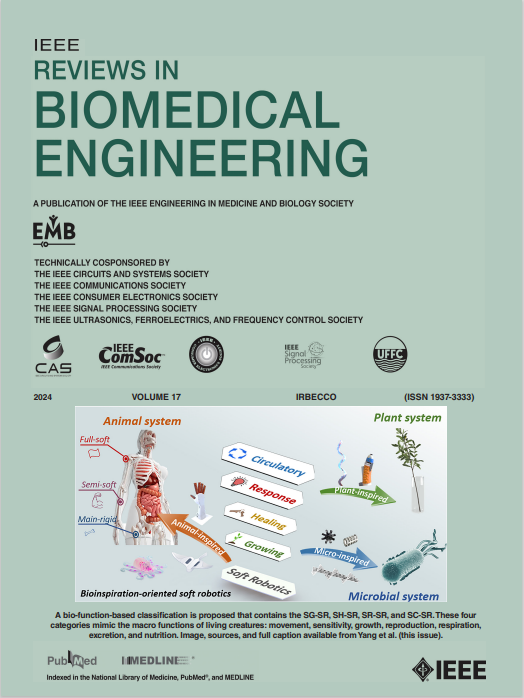Advancing Cardiac Organoid Engineering Through Application of Biophysical Forces
IF 17.2
1区 工程技术
Q1 ENGINEERING, BIOMEDICAL
引用次数: 0
Abstract
Cardiac organoids represent an important bioengineering opportunity in the development of models to study human heart pathophysiology. By incorporating multiple cardiac cell types in three-dimensional culture and developmentally-guided biochemical signaling, cardiac organoids recapitulate numerous features of heart tissue. However, cardiac tissue also experiences a variety of mechanical forces as the heart develops and over the course of each contraction cycle. It is now clear that these forces impact cellular specification, phenotype, and function, and should be incorporated into the engineering of cardiac organoids in order to generate better models. In this review, we discuss strategies for engineering cardiac organoids and report the effects of organoid design on the function of cardiac cells. We then discuss the mechanical environment of the heart, including forces arising from tissue elasticity, contraction, blood flow, and stretch, and report on efforts to mimic these biophysical cues in cardiac organoids. Finally, we review emerging areas of cardiac organoid research, for the study of cardiac development, the formation of multi-organ models, and the simulation of the effects of spaceflight on cardiac tissue, and consider how these investigations might benefit from the inclusion of mechanical cues.应用生物物理力推进心脏类器官工程
心脏类器官是研究人类心脏病理生理模型的重要生物工程机会。通过在三维培养中结合多种心脏细胞类型和发育引导的生化信号,心脏类器官概括了心脏组织的许多特征。然而,随着心脏的发育和在每个收缩周期的过程中,心脏组织也会受到各种机械力的影响。现在很清楚,这些力量影响细胞规格,表型和功能,并应纳入心脏类器官的工程,以产生更好的模型。在这篇综述中,我们讨论了心脏类器官的工程策略,并报道了类器官设计对心脏细胞功能的影响。然后,我们讨论了心脏的机械环境,包括由组织弹性、收缩、血流和拉伸引起的力,并报告了在心脏类器官中模仿这些生物物理线索的努力。最后,我们回顾了心脏类器官研究的新兴领域,包括心脏发育研究、多器官模型的形成以及航天对心脏组织影响的模拟,并考虑了这些研究如何从包含机械线索中受益。
本文章由计算机程序翻译,如有差异,请以英文原文为准。
求助全文
约1分钟内获得全文
求助全文
来源期刊

IEEE Reviews in Biomedical Engineering
Engineering-Biomedical Engineering
CiteScore
31.70
自引率
0.60%
发文量
93
期刊介绍:
IEEE Reviews in Biomedical Engineering (RBME) serves as a platform to review the state-of-the-art and trends in the interdisciplinary field of biomedical engineering, which encompasses engineering, life sciences, and medicine. The journal aims to consolidate research and reviews for members of all IEEE societies interested in biomedical engineering. Recognizing the demand for comprehensive reviews among authors of various IEEE journals, RBME addresses this need by receiving, reviewing, and publishing scholarly works under one umbrella. It covers a broad spectrum, from historical to modern developments in biomedical engineering and the integration of technologies from various IEEE societies into the life sciences and medicine.
 求助内容:
求助内容: 应助结果提醒方式:
应助结果提醒方式:


